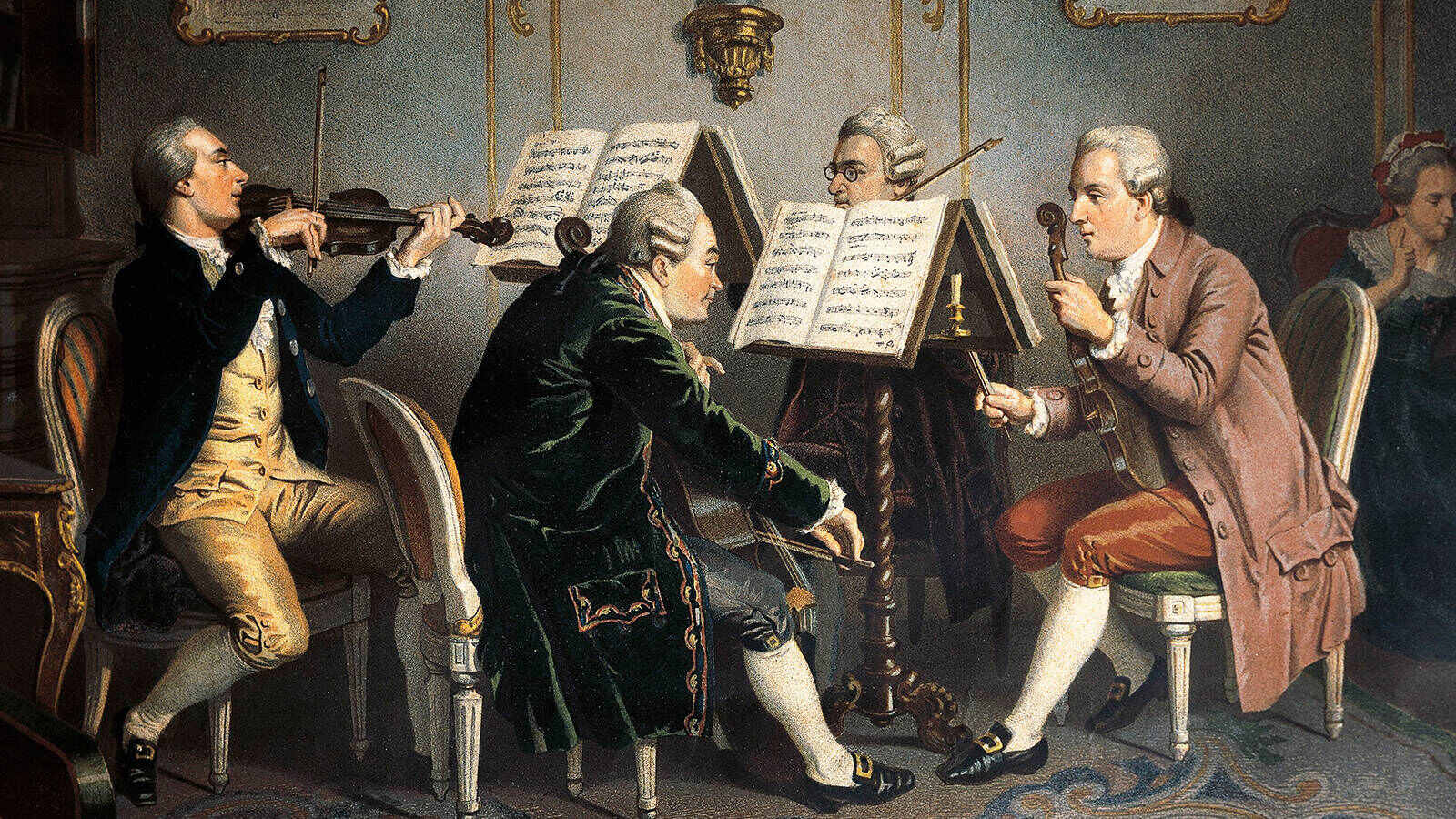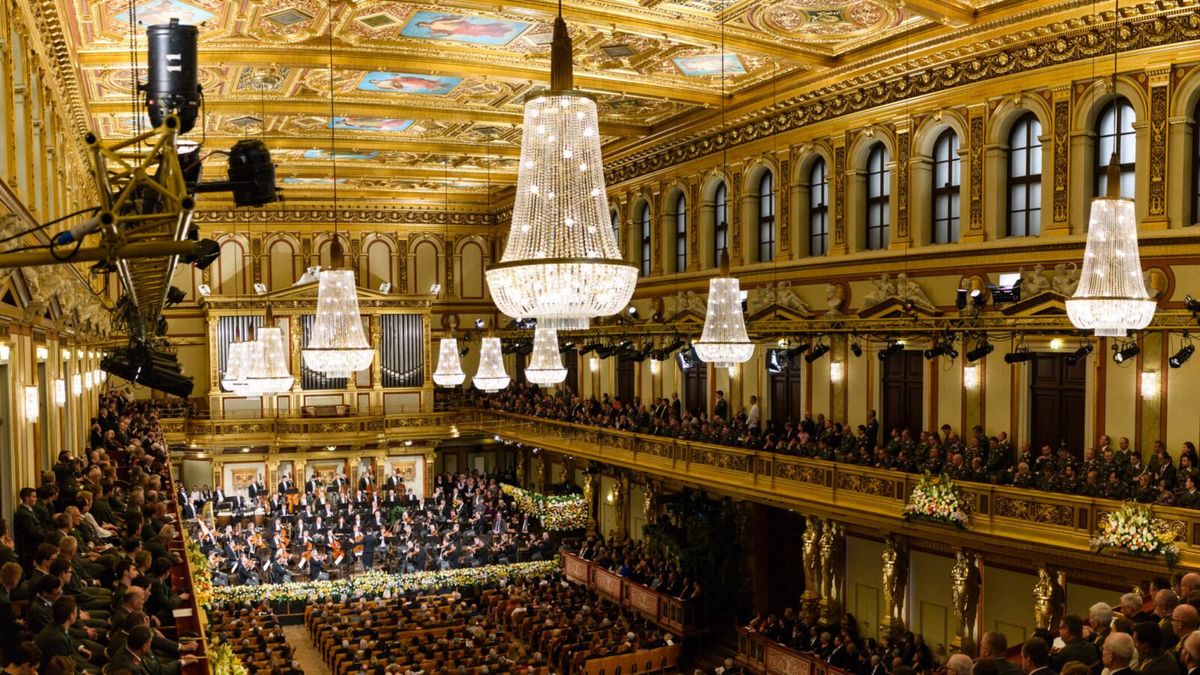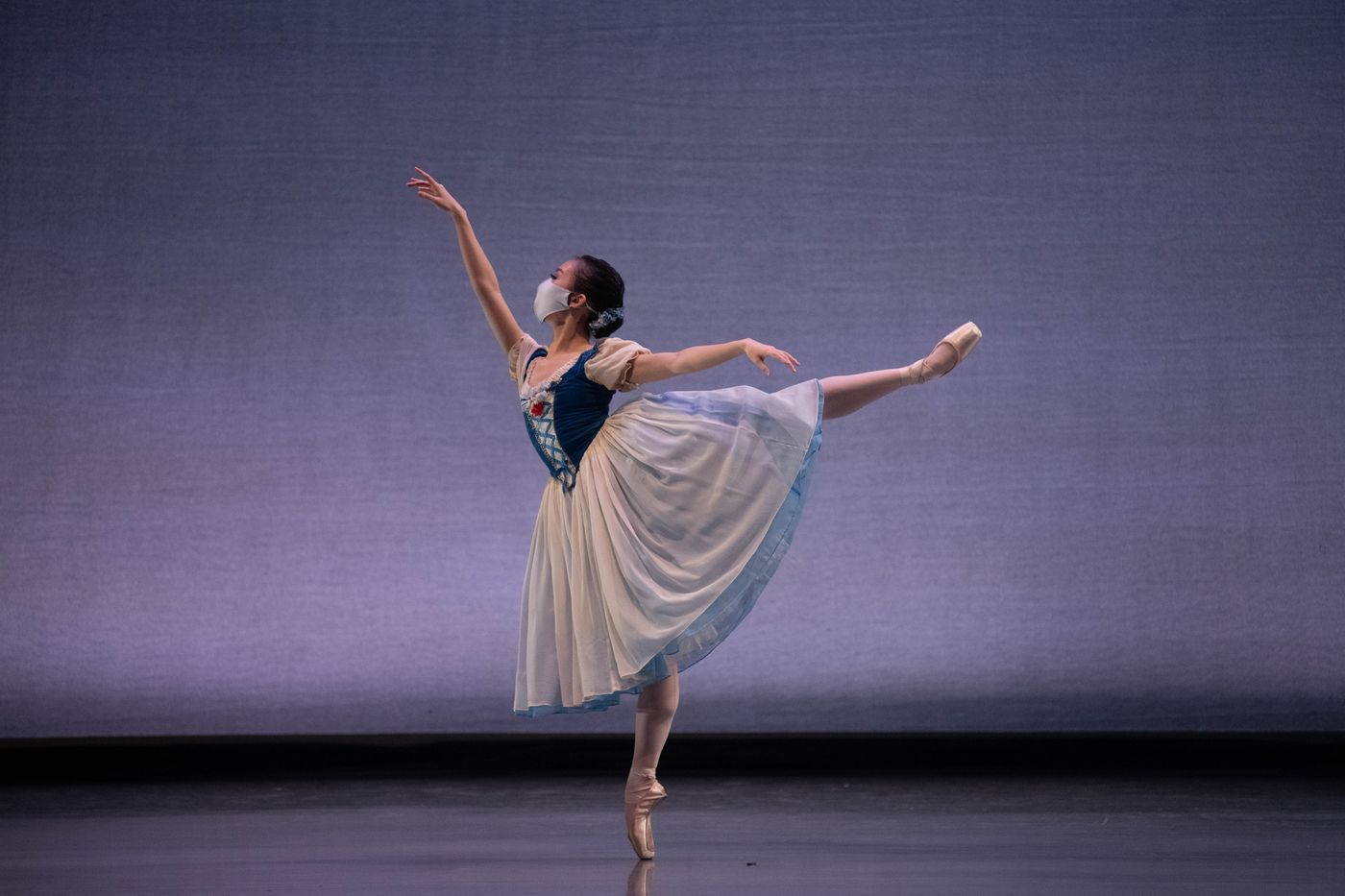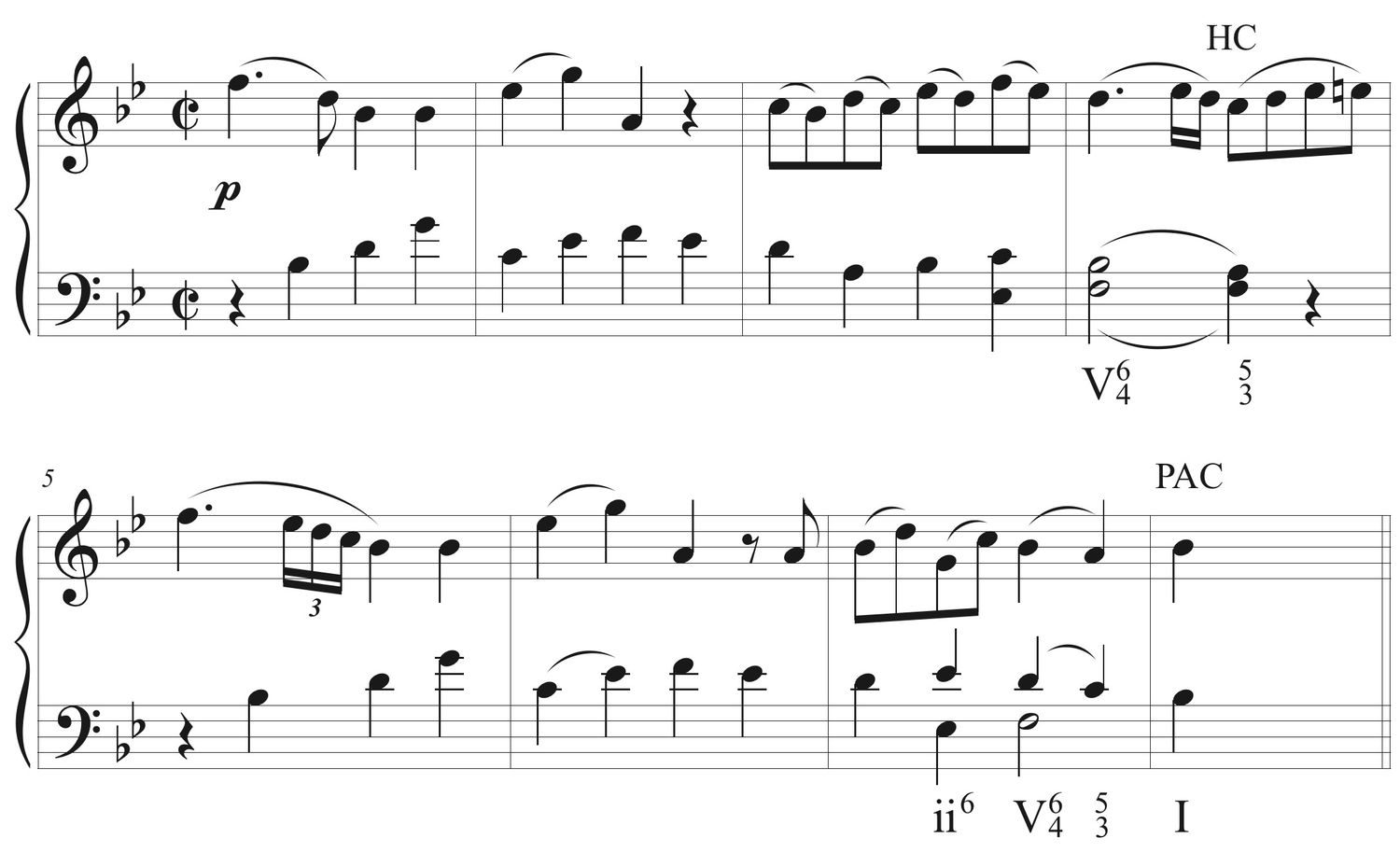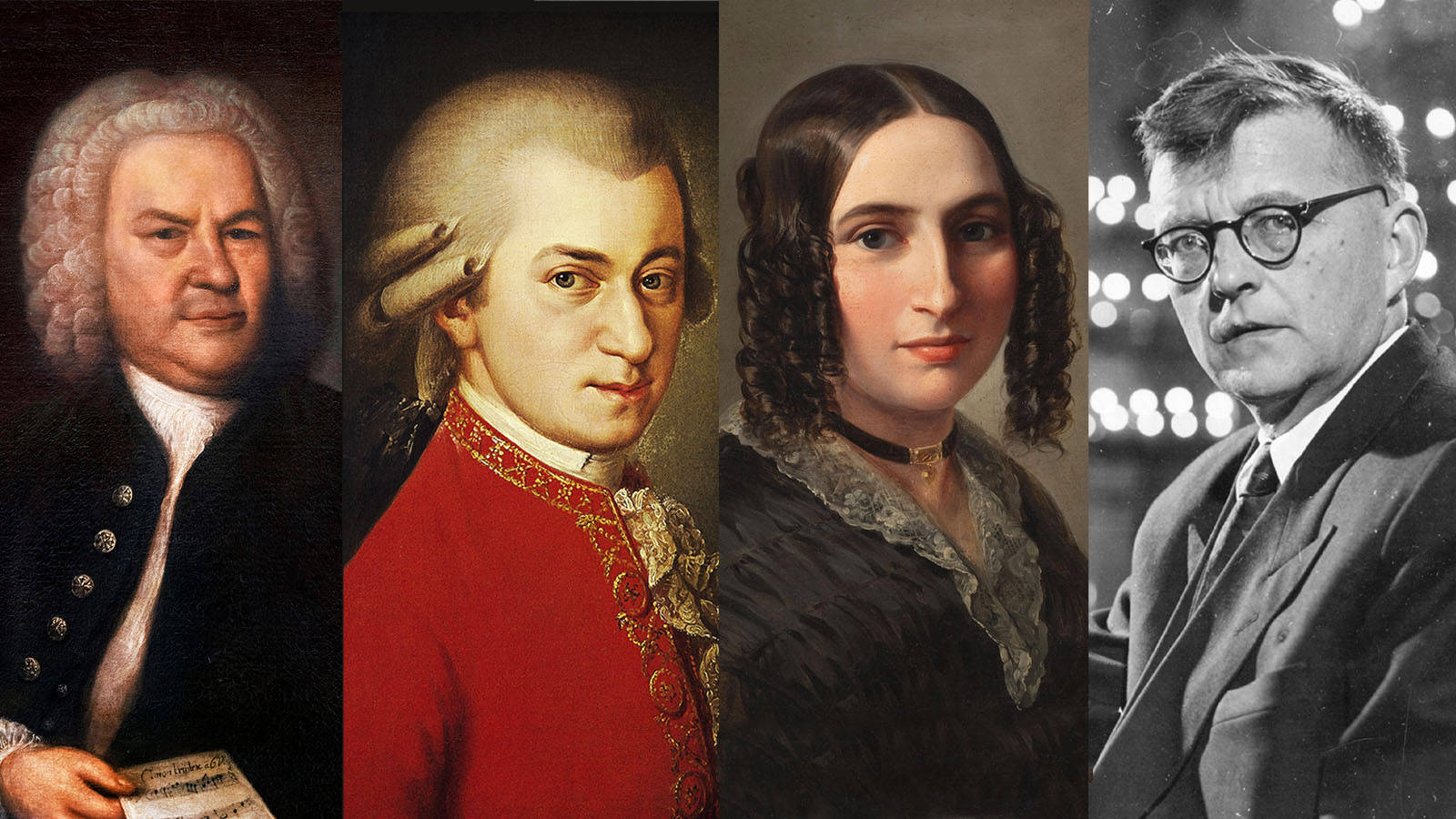

Classical
When Was Classical Music Period
Modified: February 24, 2024
Discover the origins and defining characteristics of the Classical music period. Explore the timeless compositions and influential composers that shaped this era.
(Many of the links in this article redirect to a specific reviewed product. Your purchase of these products through affiliate links helps to generate commission for AudioLover.com, at no extra cost. Learn more)
Table of Contents
Introduction
Classical music is a genre that has captivated audiences for centuries, with its rich history and timeless compositions. It is a genre that transcends time and continues to inspire and move people to this day. But when exactly was the Classical Music period? In this article, we will delve into the origins, characteristics, and key figures of this influential period of music history.
The Classical Music period, also known as the Classical era, began in the mid-18th century and lasted until the early 19th century. This era followed the Baroque period and gave birth to some of the most renowned composers and compositions in Western music.
One of the defining factors of the Classical Music period was a shift in musical style. As opposed to the intricate and elaborate compositions of the Baroque era, Classical music embraced simplicity, clarity, and balance. The music became more structured and focused on harmonious melodies and balanced phrases.
During this period, there was also a rise in the importance of the orchestra. Composers began to utilize larger ensembles, including string sections, woodwinds, brass, and percussion, to create a fuller and more dynamic sound. This shift led to the development of the symphony, a musical form that became a staple of the Classical era.
Another significant characteristic of the Classical Music period was the emergence of instrumental music as a standalone genre. While vocal music was still important, instrumental music, such as symphonies, sonatas, and concertos, began to take center stage. Composers focused on exploring the capabilities of different instruments and created virtuosic and technically demanding compositions.
The Classical Music period saw the rise of many influential composers who left an indelible mark on the genre. Figures such as Wolfgang Amadeus Mozart, Ludwig van Beethoven, and Joseph Haydn are synonymous with the Classical era. These composers revolutionized music, pushing boundaries and creating works that would stand the test of time.
Definition of Classical Music
Classical music, as a genre, encompasses a wide range of musical compositions that adhere to specific stylistic and structural principles. It is considered one of the most significant periods in music history, characterized by its balance, order, and sense of proportion. Classical music is often described as a refined and elegant form of art, known for its emotional depth and intellectual complexity.
Unlike popular or contemporary music, classical music is typically composed for instruments rather than being focused on vocals or lyrics. It highlights the capabilities of different instruments and emphasizes instrumental techniques, often showcasing virtuosic performances. The compositions are meticulously crafted, with careful attention to harmony, melody, and form.
One of the distinguishing features of classical music is its adherence to standardized musical forms. These include symphonies, concertos, sonatas, and chamber music, each with its own specific structure and characteristics. Within these forms, composers have the freedom to explore various musical ideas and themes, often incorporating contrasting sections, elaborate melodies, and intricate harmonies.
Classical music is characterized by its use of tonality, which means that compositions are written in a specific key or mode. This tonal framework provides a foundation for the melodic and harmonic development of the music, creating a sense of resolution and tension. While dissonance may be used to create emotional impact, it is often resolved to maintain a sense of balance and stability.
Furthermore, classical music often displays a heightened sense of craftsmanship and attention to detail. Composers meticulously notate their compositions, providing specific instructions for dynamics (volume), articulation (how the notes are played), and phrasing (how the music is shaped). This level of precision allows for consistent interpretations of the music, ensuring that the composer’s intentions are conveyed accurately.
Overall, classical music is a genre that showcases the depth and complexity of human expression. It is a blend of technical mastery, artistic creativity, and intellectual exploration, providing a profound and enduring musical experience. Whether through the grandeur of a symphony or the intimacy of a sonata, classical music continues to resonate with audiences and remains an integral part of our cultural heritage.
The Roots of Classical Music
To truly understand the origins of classical music, we must delve into the rich tapestry of musical history that preceded it. Classical music evolved from a combination of various musical styles and traditions, building upon the foundations laid by early composers and musicians.
One of the significant influences on classical music can be traced back to the Baroque period, which preceded it. Baroque music, with its ornate and intricate compositions, laid the groundwork for many of the musical techniques and structures that would later define the Classical era. Composers such as Johann Sebastian Bach and Antonio Vivaldi were instrumental in shaping the musical landscape of their time and laying the groundwork for future generations.
Additionally, the Classical Music period was greatly influenced by the development of musical forms and techniques during the Renaissance era. The Renaissance was characterized by a renewed interest in the arts, including music. Composers such as Giovanni Palestrina and Josquin des Prez created polyphonic choral music that laid the foundation for the contrapuntal style prominent in classical compositions.
Furthermore, the Classical era was also greatly influenced by the cultural and intellectual movements of the time. The Age of Enlightenment, with its emphasis on reason, scientific inquiry, and humanism, had a profound impact on classical music. Compositional techniques became more deliberate and structured, reflecting the rational and ordered nature of Enlightenment ideals.
Another significant influence on the roots of classical music was the development of the symphony orchestra. The emergence of large ensembles, consisting of strings, woodwinds, brass, and percussion, allowed for a more dynamic and expansive sound. Composers began to experiment with orchestration, exploring the possibilities of different instruments and creating symphonic works that would become hallmarks of the Classical period.
It is worth noting that classical music also drew inspiration from folk traditions and cultural expressions of the time. The incorporation of folk melodies and dances added a touch of regional flavor to many compositions, imbuing them with a sense of authenticity and connection to the people.
In essence, the roots of classical music can be traced back to a combination of historical, cultural, and artistic factors. It is an amalgamation of the styles and techniques that came before it, with composers of the Classical era building upon the foundations laid by their predecessors. This blending of influences, coupled with the unique artistic vision of composers during this period, gave rise to the distinct and enduring legacy of classical music that we still cherish today.
Characteristics of the Classical Music Period
The Classical Music period is characterized by a set of distinct features that distinguish it from other musical eras. These characteristics helped shape the unique identity of classical music and define its lasting legacy. Here are some key characteristics of the Classical Music period:
-
Emphasis on clarity and balance:
Classical music is known for its clarity and balance. Composers of this era aimed to create music that was easily comprehensible to the listener. Melodies were often simple and memorable, with clear-cut phrases and structures. The music was carefully balanced, with equal attention given to different sections and voices.
-
Structured musical forms:
During the Classical era, composers embraced standardized musical forms such as symphonies, sonatas, concertos, and string quartets. These forms provided a framework for composers to explore various musical ideas while maintaining a cohesive structure. Within these forms, composers would often employ contrasting sections, melodic developments, and variations.
-
Importance of instrumental music:
Classical music saw a shift in focus from vocal music to instrumental music. While vocal music was still prominent, instrumental compositions took center stage during this period. Composers explored the capabilities of different instruments, creating virtuosic and technically demanding works for solo instruments and orchestras.
-
Expanded role of the orchestra:
The Classical period witnessed the rise of the orchestra as a central force in musical composition. Composers began to utilize larger ensembles, including strings, woodwinds, brass, and percussion. This expansion allowed for a broader range of tonal colors and dynamics in compositions. The symphony orchestra became a hallmark of the Classical era.
-
Balance between emotion and intellect:
Classical music strikes a balance between emotional expression and intellectual complexity. Compositions during this period evoke a range of emotions, from joy and exuberance to sorrow and contemplation. However, these emotions are conveyed through a rational and structured approach, with careful attention to harmonies, melodies, and formal structures.
-
Clear tonal harmony:
Classical music is characterized by a clear tonal harmony, where compositions are written in specific keys or modes. This tonal framework provides a sense of musical tension and resolution, creating a satisfying and harmonious listening experience. While dissonance is utilized, it is often resolved to maintain balance and stability.
These characteristics of clarity, balance, structure, and emotional expression in a rational framework set the Classical Music period apart. The influence of these characteristics can be seen not only in the works of renowned composers but also in the continued appreciation and endurance of classical music over the centuries.
Key Composers of the Classical Music Period
The Classical Music period is renowned for producing some of the most influential and celebrated composers in the history of Western music. These composers pushed the boundaries of musical expression, revolutionized the art form, and left an indelible mark on the world of classical music. Here are some key figures of the Classical Music period:
-
Wolfgang Amadeus Mozart (1756-1791):
Mozart is widely regarded as one of the greatest composers of all time. His compositions spanned a wide range of genres, including symphonies, concertos, operas, chamber music, and choral works. His extraordinary musical talent and prolific output made him a luminary of the Classical era, and his works continue to captivate audiences worldwide.
-
Ludwig van Beethoven (1770-1827):
Beethoven is considered a transitional figure between the Classical and Romantic periods. His compositions revolutionized music, defying conventions and pushing the boundaries of form and expression. Beethoven’s symphonies, piano sonatas, and string quartets are hailed as masterpieces and have had a profound impact on subsequent generations of composers.
-
Joseph Haydn (1732-1809):
Haydn, often referred to as the “Father of the Symphony” and the “Father of the String Quartet,” played a crucial role in the development of these genres. He composed over 100 symphonies and numerous other instrumental works, blending elegance, innovation, and humor in his compositions. Haydn was a significant influence on both Mozart and Beethoven.
-
Christoph Willibald Gluck (1714-1787):
Gluck was a celebrated opera composer who played a pivotal role in the development of opera during the Classical period. He sought to reform the practices of opera, emphasizing simplicity and clarity in the music and highlighting the importance of dramatic expression. Gluck’s operas, such as “Orfeo ed Euridice” and “Iphigénie en Aulide,” marked a turning point in the history of opera.
While these composers are just a few examples, they exemplify the extraordinary talent and innovation of the Classical Music period. Their compositions continue to be performed and cherished today, showcasing the timeless appeal and lasting legacy of their work.
Major Works of the Classical Music Period
The Classical Music period produced a wealth of iconic and enduring compositions that have become cornerstones of the classical repertoire. These works not only exemplify the style and characteristics of the era but also showcase the extraordinary creativity and craftsmanship of the composers. Here are some major works of the Classical Music period:
-
Wolfgang Amadeus Mozart – Symphony No. 40 in G minor:
Mozart’s Symphony No. 40 is one of his most beloved and frequently performed symphonies. It is a dramatic and emotionally charged work, characterized by its memorable melodies and masterful orchestration. The intense opening theme and the lyrical beauty of the second movement have made this symphony a favorite among audiences.
-
Ludwig van Beethoven – Symphony No. 9 in D minor (“Choral”):
Beethoven’s Symphony No. 9 is a monumental and groundbreaking work. It is notable for its inclusion of a full choir in the final movement, singing Friedrich Schiller’s “Ode to Joy.” This symphony is a testament to Beethoven’s visionary approach to composing, as well as his ability to blend intricate musical structures with powerful and deeply emotional themes.
-
Joseph Haydn – String Quartets Op. 76:
Haydn’s set of six string quartets, known as Op. 76, is considered a pinnacle of the string quartet genre. These works showcase Haydn’s mastery of form, his inventive use of textures and themes, and his ability to balance wit, charm, and profound expression. The quartets are rich in musical ideas and are beloved for their engaging melodies and interplay between the four voices.
-
Christoph Willibald Gluck – Orfeo ed Euridice:
Gluck’s opera, “Orfeo ed Euridice,” is a seminal work in the history of opera. It marked a departure from the elaborate and ornate style of Baroque opera, advocating for simplicity and emotional impact. The opera tells the Greek myth of Orpheus’s journey to the underworld to rescue his beloved Euridice, and features powerful vocal performances and emotionally charged arias.
These are just a few examples of the major works of the Classical Music period. This era produced an abundance of remarkable compositions across various genres, including symphonies, concertos, chamber music, operas, and sonatas. The enduring popularity and continued performances of these works testify to their lasting impact and their ability to transcend time and captivate audiences of all generations.
Influence and Legacy of the Classical Music Period
The influence of the Classical Music period stretches far beyond its own time, shaping the course of Western music and leaving a lasting legacy that continues to resonate today. The innovations and artistic achievements of this era have had a profound impact on subsequent generations of composers and musicians. Here are some key aspects of the influence and legacy of the Classical Music period:
-
Development of musical forms:
The Classical Music period laid the groundwork for many of the musical forms and structures that are still prevalent in classical music today. The symphony, concerto, sonata, and string quartet, as we know them, owe their existence and development to the composers of the Classical era. These forms have provided a framework for countless compositions in subsequent periods.
-
Evolution of the orchestra:
The rise of the orchestra as a central and essential ensemble in Western music can be largely attributed to the Classical Music period. Composers such as Haydn, Mozart, and Beethoven expanded the size and scope of the orchestra, exploring new sonic possibilities and inventing innovative orchestration techniques. Their contributions paved the way for the symphonic tradition that still thrives today.
-
Transformation of opera:
Classical composers, notably Gluck and Mozart, revolutionized the genre of opera during this period. They sought to strip away the excesses of Baroque opera and place a greater emphasis on dramatic storytelling and emotional depth. Their innovations in opera composition and staging had a profound influence on future operatic works and helped shape the evolution of the art form.
-
Inspiration for future composers:
The works of composers from the Classical Music period serve as an endless source of inspiration for composers in later periods. The melodic beauty, harmonic richness, and structural clarity found in the compositions of Mozart, Beethoven, and their contemporaries continue to captivate and influence composers across genres. Their enduring legacy has shaped the development of music in the centuries that followed.
-
Perpetual popularity and performance:
Classical compositions from this period have stood the test of time, retaining their popularity and enduring appeal. Symphonies such as Mozart’s Symphony No. 40, Beethoven’s Symphony No. 9, and Haydn’s Op. 76 string quartets are still regularly performed in concert halls around the world. The timeless beauty and emotional resonance of these works continue to engage and move audiences.
The Classical Music period left an indelible mark on the world of music, shaping the development of musical forms, orchestrations, and operatic traditions. Its influence can be heard in music from subsequent periods, and its compositions remain pillars of the classical repertoire. The principles of balance, clarity, and emotional expression that defined the Classical era continue to inspire and guide musicians and composers, ensuring that its legacy will endure for generations to come.
Conclusion
The Classical Music period stands as a milestone in the history of Western music, characterized by its elegance, balance, and artistic refinement. Composers of this era, such as Mozart, Beethoven, Haydn, and Gluck, pushed the boundaries of musical expression and left an indelible mark on the world of classical music.
The Classical period saw a shift in musical style, with a focus on clear melodies, structured forms, and balanced orchestration. It laid the foundation for the development of musical forms and genres that continue to shape the classical tradition today. The influence of this era can be heard in the symphonies, concertos, chamber music, and operas composed throughout subsequent periods.
Furthermore, the Classical Music period expanded the role of the orchestra, revolutionized opera, and served as a source of inspiration for composers in the centuries that followed. The compositions of this era continue to be celebrated and performed, captivating audiences with their timeless beauty and emotional resonance.
The influence and legacy of the Classical Music period extend far beyond its own time. It has shaped the course of Western music, inspiring countless generations of composers, musicians, and music lovers. The principles of clarity, balance, and emotional expression that defined this era continue to guide and inspire artists in their pursuit of musical excellence.
In conclusion, the Classical Music period stands as a testament to the artistic achievements of composers who embraced innovation while upholding the principles of structure and elegance. Its rich heritage of compositions continues to enchant and move audiences, ensuring that the legacy of this remarkable era will endure for centuries to come.


